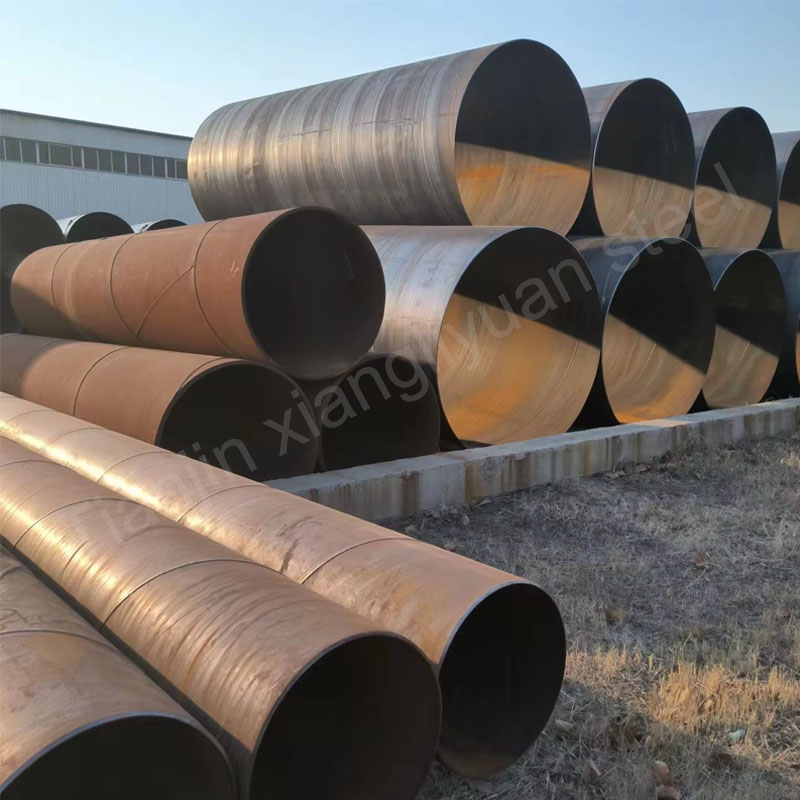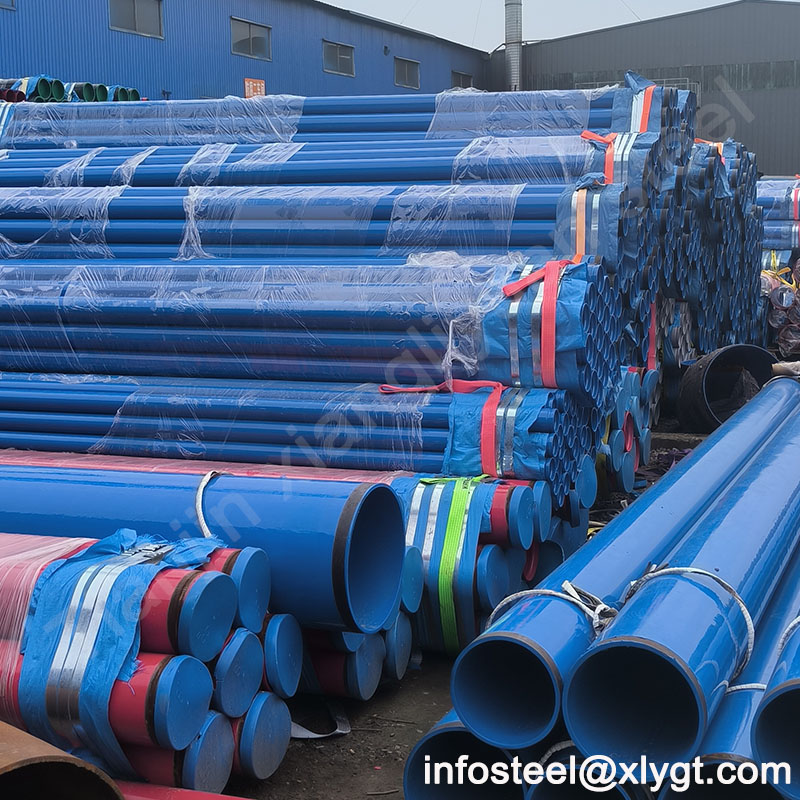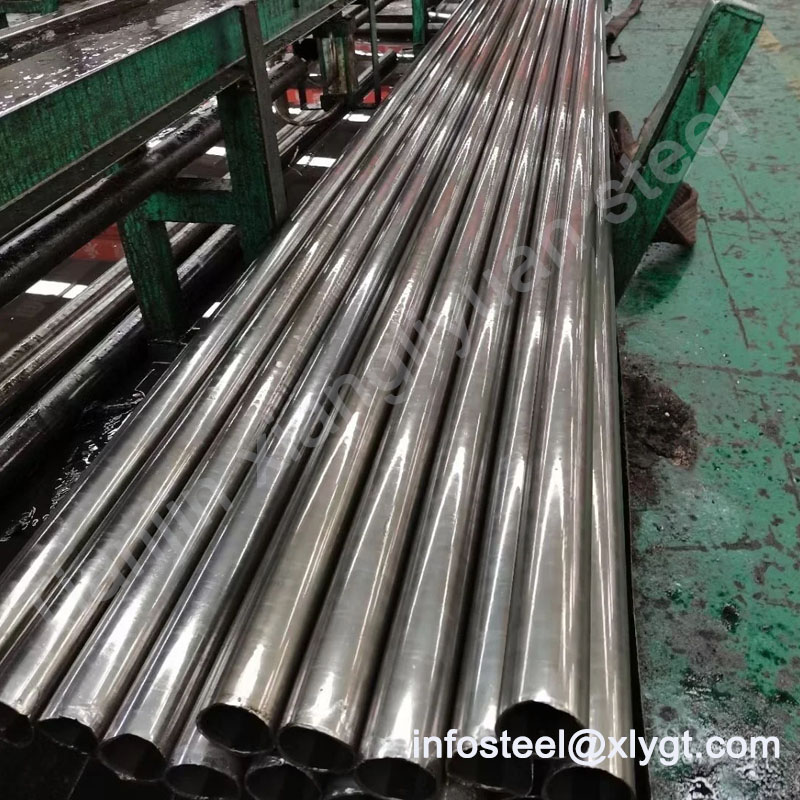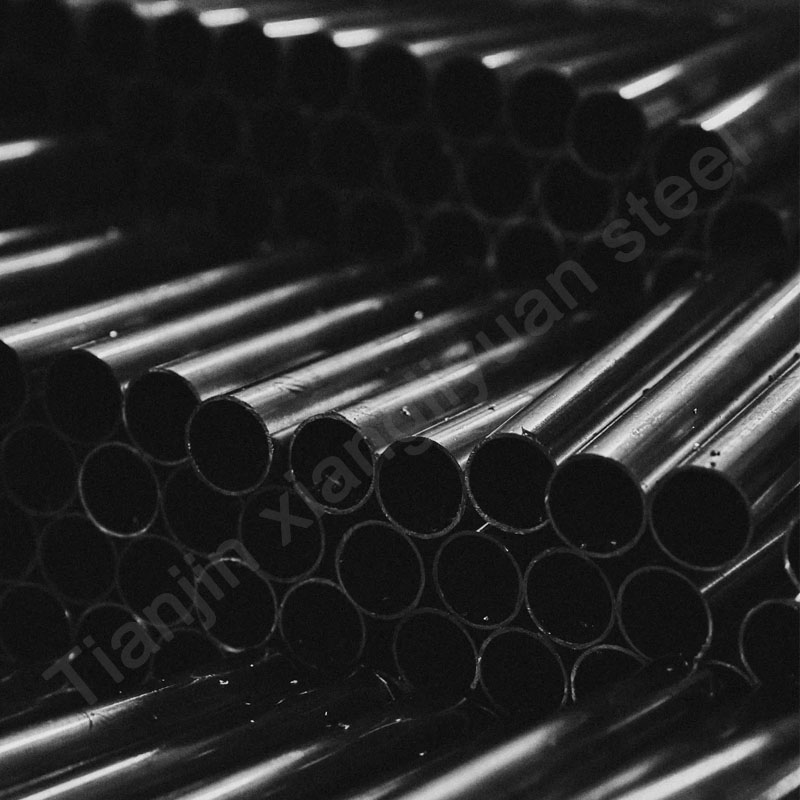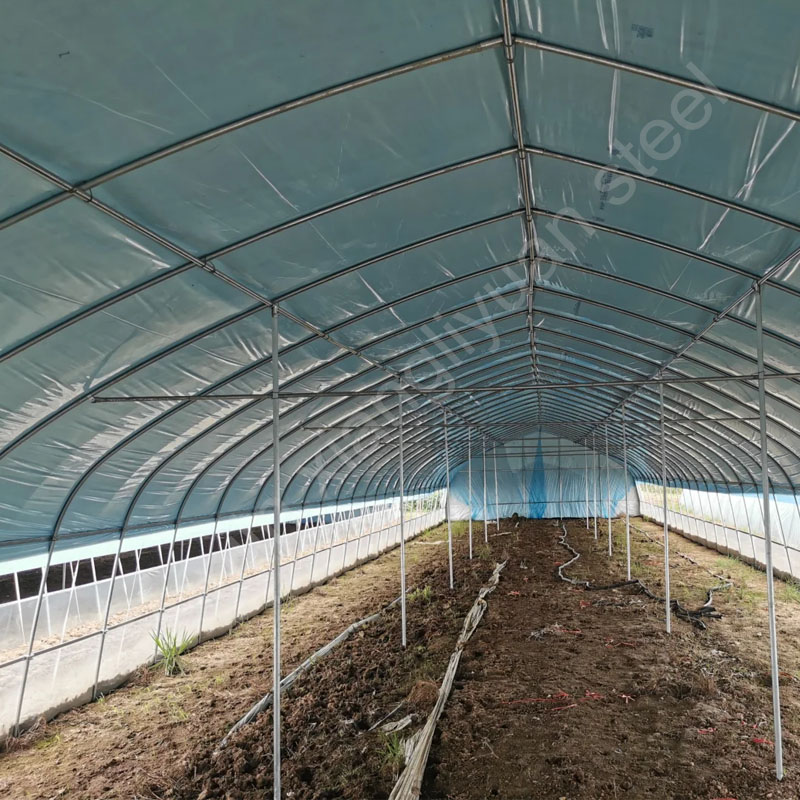Welded pipe, also known as welded steel pipe, is a type of steel pipe that is formed by bending steel plates or steel strips into shapes and then connecting them into pipes through welding processes. It is a type of steel pipe widely used in the industrial and construction fields, with the advantages of high production efficiency, low cost, and high material utilization. Welded pipes can be divided into different types according to different welding processes, materials, uses, etc. The following will introduce the classification, materials, standards and uses of welded pipes.
According to different welding processes, welded pipes can be mainly divided into two categories: straight seam welded pipes and spiral welded pipes.
Straight seam welded pipe: The production process of this type of welded pipe is to weld steel plates or steel strips in a straight line direction, and the weld is parallel to the longitudinal direction of the pipe. Straight seam welded pipes have high production efficiency and are suitable for mass production. They are widely used in pipelines for conveying low-pressure fluids, such as water, gas, air, steam, etc. Common straight seam welded pipes are ERW (electric resistance welded pipe) and LSAW (submerged arc welded pipe).
Spiral welded pipe: Spiral welded pipe is made by bending steel plates into pipes in a spiral line and welding them, and its welds are distributed in a spiral shape. Spiral welded pipes can adapt to larger pipe diameter requirements and are widely used in long-distance, large-diameter pipelines such as oil and gas. Due to the characteristics of its production process, spiral welded pipes perform well in weld strength and pressure resistance.
The material of the welded pipe can choose different types of steel according to its use and the pressure environment it withstands. Common welded pipe materials mainly include carbon steel, alloy steel and stainless steel.
Carbon steel welded pipe: Carbon steel is one of the most commonly used materials for welded pipes. It has low cost and high strength and is suitable for the transportation of most common fluids. Carbon steel welded pipes can be divided into low carbon steel and medium and high carbon steel. Low carbon steel welded pipes are mainly used for fluid transportation under low pressure environments, while medium and high carbon steel welded pipes are suitable for industrial scenes with higher pressures.
Alloy steel welded pipes: Alloy steel welded pipes are made by adding other metal elements such as chromium, nickel, molybdenum, etc. to steel to improve the corrosion resistance, wear resistance and high temperature performance of the welded pipe. Alloy steel welded pipes are usually used in pipeline systems under high temperature and high pressure environments, such as petrochemicals, power stations and other industries.
Stainless steel welded pipe: Stainless steel welded pipe is often used in industries with high requirements for hygiene and corrosion resistance, such as chemical, food, and medicine, due to its excellent corrosion resistance. The cost of stainless steel welded pipe is relatively high, but it has a long service life in corrosive environments.
Common carbon steel welded pipe grades are as follows:
China Standard (GB/T): Common steel grades include Q195, Q215, Q235, Q345, etc., among which Q235 is the most widely used one, suitable for low-pressure fluid transportation and general structural purposes. Q345 is a low-alloy high-strength steel with good weldability and plasticity, and is often used in occasions with high pressure or high strength requirements.
American Standard (ASTM): Commonly used carbon steel welded pipe grades in the United States include ASTM A53 Gr.A and Gr.B, ASTM A106 Gr.B, ASTM A500, etc. ASTM A53 is a commonly used low-pressure transmission pipe. Gr.B grade material has high strength and is suitable for working conditions with medium pressure. ASTM A106 is mainly used in high temperature and high pressure environments.
European Standard (EN): Common steel grades in European standards include S235, S275, S355, etc. The numbers in these steel grades represent their minimum yield strength (in MPa), which is suitable for occasions with different strength requirements.
The production and application of carbon steel welded pipes need to follow different standards, and different countries and regions have their own standard systems.
Chinese Standard (GB/T):
GB/T 3091: This standard applies to welded steel pipes for conveying low-pressure fluids such as water, gas, air, and steam.
GB/T 9711: This is the standard for steel pipes for conveying oil and gas industries, covering the technical requirements of pipeline pipes.
GB/T 13793: Standard for straight seam electric welded steel pipes for general structures and machinery.
American Standard (ASTM):
ASTM A53: This standard applies to welded steel pipes for general purposes, including low-pressure fluid conveying and structural purposes.
ASTM A106: Applicable to seamless and welded steel pipes in high-temperature environments, usually used in high-temperature and high-pressure working conditions such as refineries and boilers.
API 5L: This is the standard for pipeline steel pipes used in the oil and gas industry and is suitable for long-distance transmission pipelines.
European Standard (EN): EN 10217: This standard applies to welded steel pipes that bear pressure and are widely used in boiler and pressure vessel manufacturing.
EN 10219: This standard applies to cold-formed welded steel pipes, mainly used for structural purposes.
Welded pipes are widely used in many industries and fields, and their specific uses mainly include the following aspects:
Fluid transportation: The most common use of welded pipes is to transport liquids and gases, such as water, gas, steam, oil and natural gas. According to the nature of the transported medium, welded pipes of different materials and specifications can be selected.
Structural pipes: Welded pipes are also widely used in building structures, such as support columns, scaffolding, bridges, etc. of steel structure buildings. Structural welded pipes usually have high requirements for the strength and durability of pipes, and are mainly made of carbon steel or alloy steel.
Industrial pipelines: In industrial fields such as petrochemicals, power plants, and pharmaceuticals, welded pipes are used to connect pipelines between industrial equipment to transport high-temperature, high-pressure, and corrosive media. This type of pipe has strict material requirements, and stainless steel or alloy steel welded pipes are usually used.
Mechanical processing: Welded pipes are also used to manufacture various mechanical parts and equipment, such as bearings, bushings, cylinders, etc. Such applications have high requirements on the accuracy and strength of welded pipes, and precision welded pipes are usually used.
As a commonly used steel product, welded pipes have become an indispensable material in modern industry and construction due to their efficient production process and wide range of applications. Welded pipes of different types and materials play an important role in different application scenarios, and their production and use need to follow strict international and national standards to ensure safety and quality.

